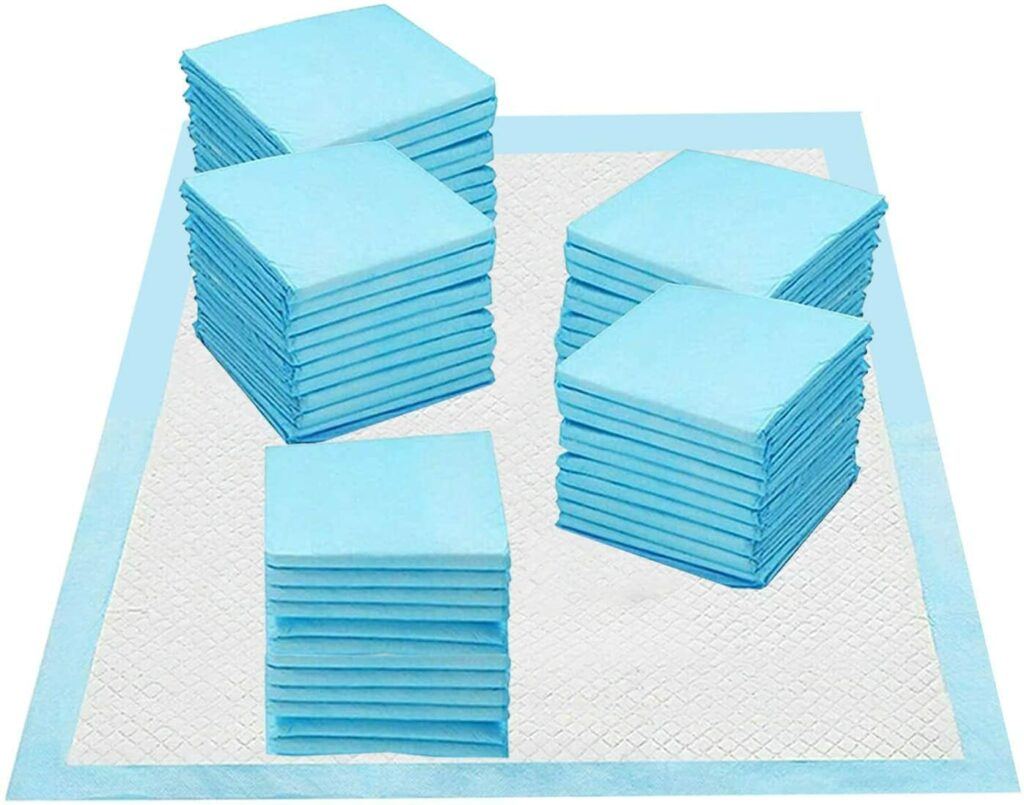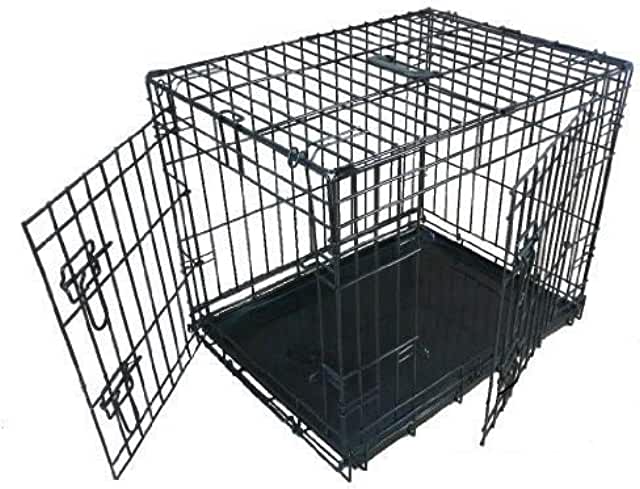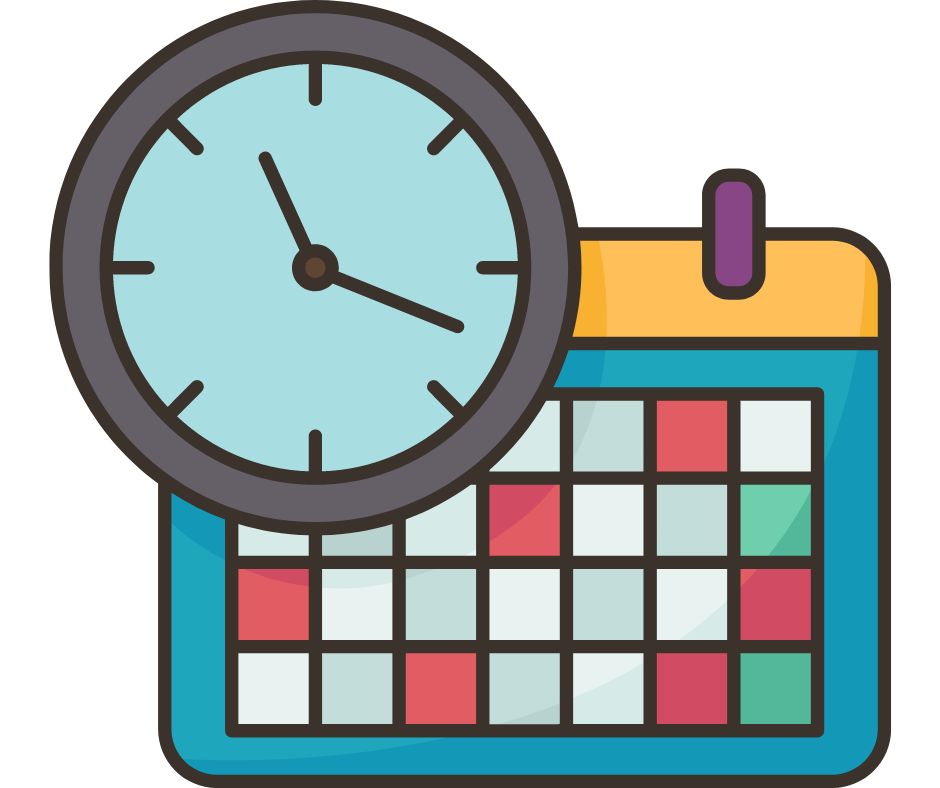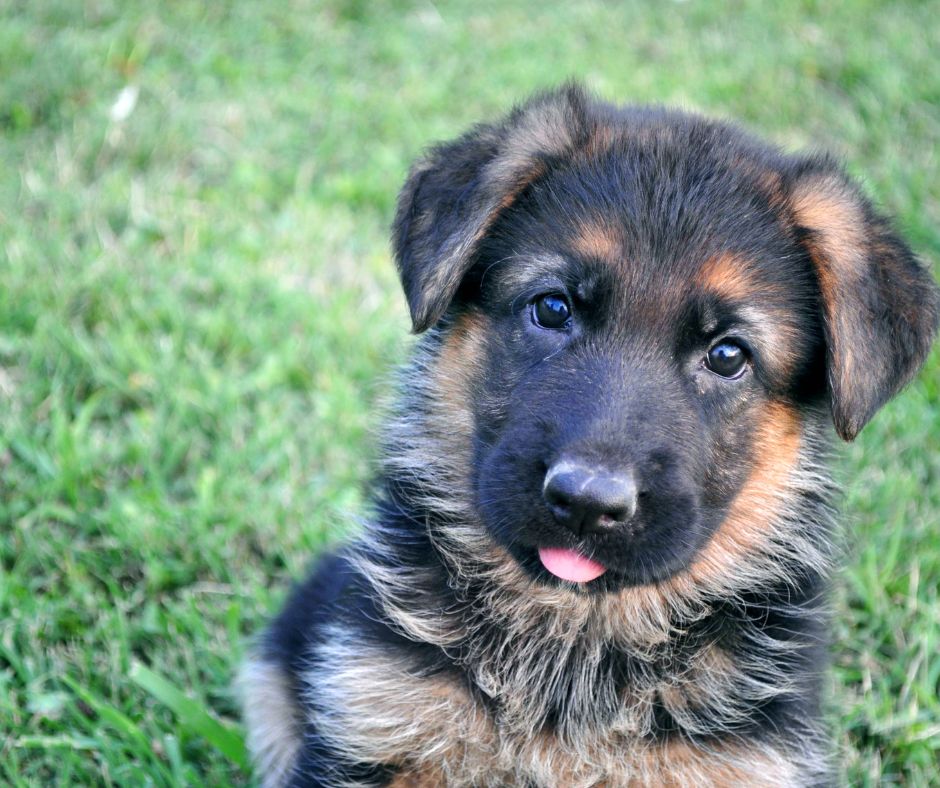If you’re reading this, then the chances are you’ve just welcomed a German Shepherd puppy into your home and are now looking for guidance on potty training.
Well, look no further!
This guide will provide you with all the information and tips you need to potty train a German shepherd puppy in no time at all.
When you first get your German Shepherd puppy potty training is probably going to be one of your top priorities. This can be quite challenging especially if you have never potty trained a puppy before.
So let me walk you through everything you need to know with this ultimate step by step guide.
9 Steps To Potty Train A German Shepherd Puppy Successfully
There are 9 steps you will need to go through so let’s get started!
Step 1: Understand Your German Shepherd Puppy’s Development
Before we jump into it you need to know what to expect from your puppy over the weeks and months ahead.
Potty Training An 8 Week Old German Shepherd Puppy
Most people will be bringing their German Shepherd puppy home from the breeder when it is around 8 weeks old. Whilst it is a good idea to start potty training as soon as you bring them home you need to be realistic about how long it is going to take.
Forget any claims that your puppy can be potty trained in 7 days or less. This is not going to happen with an 8-week old puppy as they are simply not developed enough to know when they need to go to the bathroom. The first they become aware of it is when it starts to come which of course is too late.
As they get older they will start to gain more muscle control which means they will be able to sense when they need to go. Although they won’t be able to hold it properly until they reach about 6 months old.
Potty Training A Rescue
Whilst these dogs usually come to you much older they can prove more challenging to potty train. They will be used to going wherever they please. In bad cases of abuse or if they have come from a puppy farm they will also have had no choice but to go where they sleep too.
The training methods are the same although they may prove to be a little bit more of a challenge.
There is little you can do to speed up your puppy’s natural development nor can you change a rescue dog’s past.
But there are a few things you can do that will minimise accidents and set your puppy up for long term potty training success. We will cover them all in this guide.
Know Your Puppy’s Body Language
Once your puppy begins to get the sensation of needing to go to the bathroom you will start to notice a change in their behaviour. They will usually become distracted from whatever it is they are doing and start to look for a place to potty.
The usual body language that indicates they are needing to potty is that they will start to sniff the ground and may even start to circle before eventually squatting.
If you can learn to spot these tell-tale signs then you stand a better chance of diverting them to the designated potty area before an accident occurs.
Step 2 – Choose Your Training Method
There are 2 types of training methods:
Pad Training

This involves you teaching them to potty on absorbent pads that have been specially designed for potty training. The pads are just large disposable mats which have a waterproof base and soft gel-filled absorbent top layer. They have a similar feel to a baby’s disposable nappy (UK) or diaper (US) only in a mat form.
You can also buy washable ones which are more expensive to buy initially but are likely to work out more cost effective over the long term.
The aim is to train your puppy to use the pad as their designated toilet area. You then gradually move the pad further towards the door and eventually take it completely outside.
It can be a very effective method and is the one I used with all of my dogs. You may also consider pad training your German Shepherd puppy if you live in an apartment or don’t have easy access to a backyard.
If you don’t want to buy the pads then you could also use old newspapers. Just be aware that newspapers are not as absorbent so can soon become soaked through. The print from them can also be transferred onto whatever surface it is on which is something to bear in mind.
| The Pros | The Cons |
|---|---|
| It works. | They are not expensive but they will add to your weekly budget. |
| The pads are easy to get hold of. | You need a lot of them. |
| You can use it with dogs of all ages | Your puppy may find it fun to shred them. This would be more difficult if using washable ones. |
| They need changing regularly to avoid lingering odours. | |
| Disposable ones are not particularly environmentally friendly. Washable ones would be better. |
Crate Training

Crate training is another effective potty training method for German shepherd puppies. It involves confining your puppy to a small space (their crate) for short periods of time. The theory behind it is that dogs do not like to potty in their bed so it helps them learn to hold their bladder and bowel movements until they’re let out.
When buying a crate the usual advice is to buy one that will be large enough to accommodate your German Shepherd puppy when they are fully grown. There are a couple of reasons why this makes sense.
The first is your puppy will outgrow smaller ones very fast and you don’t want to have to keep buying a new crate every few months. The second is that your puppy will get used to that crate and the space it takes up as he or she grows.
The problem with using this crate for potty training a young puppy is that the space is big enough for them to find a potty area in it away from where they sleep.
If you find that your puppy is soiling the crate then you may need to use a crate divider or switch to a smaller one just for potty training purposes.
| The Pros | The Cons |
|---|---|
| It works. | You need to train your puppy to use their crate as a bed first. |
| It can sometimes speed up the process. | It needs to be size appropriate for potty training. Ensure you buy one with a divider. |
| Good quality crates are expensive. | |
| | It might not be effective for young puppies who don’t yet have bladder control. |
| It may not be effective for a rescue who is used to soiling their sleeping areas. |
Step 3: Choose a Designated Potty Area
The next step in potty training your German shepherd puppy is to choose a designated potty area. This can be inside if you are using pads or somewhere outside if you are using the crate method.
If possible try to choose an area that is quite confined as you don’t want there to be any distractions.
It’s also much easier to clean up a small area than a larger one especially as your dog gets bigger.
It is important that you just pick one spot and stick with it.
Once you’ve chosen the potty area, take your puppy to it frequently – especially after meals and naps.
Step 4: Use a Phrase To Alert Your Puppy That It’s Time To Go To The Potty Area
You can use phrases like “go potty” “garden” or “do your business” to alert your puppy that it’s time to go to the potty area. Whatever word you choose is up to you but doing so will help them associate the phrase with going to the bathroom. This will make potty training much easier for you both.
Step 5: Establish a Potty Schedule

The third step is to establish a potty schedule. This means taking your puppy to the potty area at regular intervals throughout the day.
When To Take Your Puppy To The Designated Potty Area
Whilst it is not possible to predict with any accuracy when your puppy will need to go potty there are times when it is more likely. These are as follows:
- First thing in the morning when they wake after a night’s sleep
- After a nap
- After each meal
- If they have drank a lot of water
- After a play session
- Before you go to bed
- If their body language says so
You will need to get your puppy to the designated potty area quickly especially first thing in a morning. Their little bladders will be very full making it difficult to hold.
What To Do At The Designated Potty Area
- Take your puppy to their designated area.
- Stand with them in this area until they do their business.
- If the potty area is not a small confined area you may find it easier to have them on a leash.
- As soon as they start doing their business use your cue word eg “go potty”
- Then give then lots of praise and a treat.
How Often Should You Take Your German Shepherd Puppy To Potty
How often your German Shepherd puppy needs to go potty will depend on a number of factors although its age will play a big part in this.
As mentioned above very young puppies do not get any warning sensations letting them know that they need to go potty. When they need to go it will come wherever they are and there is nothing they can do about it. These puppies need to be taken to the potty area very frequently usually every 1 to 2 hours.
The chart below tells you the average time a German Shepherd puppy can hold it’s bladder and bowel movements for based on age.
| Your Puppy’s Age | How Often Do They Need To Potty |
|---|---|
| 8 weeks old | Every hour |
| 12 weeks old | Every 2 hours |
| 16 weeks old | Every 3 hours |
| 20 weeks old | Every 4 hours |
| 24 weeks old | Every 5 hours |
| 6 months old | Every 6 hours |
Use it to ensure you take your puppy to it’s potty area often enough. They can usually last longer at night but a young puppy won’t be able to last a whole 8 hours.
Also remember that these are average times which means some puppies can last longer than others. It also will depend upon how much water they have drank. In hot weather they will drink more and they may also drink through boredom.
Prevention is key so the aim is to get your puppy into a routine at times when they are also likely to need to go potty.
The more times you take them the quicker they will get used to it and the less accidents you will have.
Also, make sure you take them to the potty area as soon as they wake up and when you call it a day. Doing so will help avoid early morning and overnight accidents.
Step 6: Have A Puppy Feeding Schedule – Puppies Need Smaller More Frequent Meals.
Puppies have a faster metabolism compared to adult dogs. This means they’re likely to poop fast which can be around 30 minutes after eating a meal.
Also despite their tiny bodies, they need twice as many calories as an adult German Shepherd Dog. These calories need to be given to them throughout the day usually over 3 separate meals. This means that they will need to go poop more often than an adult too.
Step 7: Use Positive Reinforcement
German Shepherd Dogs are intelligent and they will respond very well to positive reinforcement. You need to be repetitive and consistent with this. Whenever your German shepherd puppy goes potty in the designated area, it’s important that you praise and reward them.
This could be in the form of treats, petting, or verbal praise. Doing so will reinforce the good behaviour you are seeking and help your puppy understand that they’re doing something right.
Step 8: Avoid Accidents
Of course, accidents will happen – that’s just part of potty training. But there are a few things you can do to minimize the chances of accidents happening in your home:
- Keep an eye on your puppy at all times and take them out frequently.
- Do not scold them if you catch them in the act. Instead, take them outside immediately.
- Clean up any accidents that happen with an enzymatic cleaner to remove the scent
Step 9: Be Patient
Training a puppy takes time, so it’s essential to be patient throughout the process. Remember that every puppy is different and will learn at its own pace. If you’re feeling frustrated, take a deep breath and remind yourself that this is just a temporary phase.
With plenty of encouragement, repetition and consistency they all get there in the end.

FAQs Regarding Potty Training A German Shepherd Puppy
Q: For how long Do I need to potty train a German Shepherd Puppy?
A: The average time it takes to potty train a German Shepherd Puppy is between 4-6 months. However, this can vary depending on the individual puppy and their level of understanding and cooperation. Some puppies may be potty trained in as little as a month, while others may take up to a year.
Q: What is the best potty training method for German Shepherd Puppies?
A: The most crucial thing when potty training any puppy is consistency. You will need to be consistent with your commands, expectations, and rewards. The two potty training methods I discuss here will work very well. Just choose the one that works best for you and your puppy and stick with it. Then repeat the schedule every single day remembering to praise when they get it right.
Q: What are some common potty training mistakes?
A: Some common potty training mistakes include not being consistent, not using positive reinforcement, and punishing your puppy for accidents. It is important to remember that potty training is a process, and accidents will happen. The key is to remain patient and consistent with your puppy, and eventually, they will get the hang of it.
Q: What should I do if my German Shepherd Puppy has an accident?
A: If your German Shepherd Puppy has an accident, the best thing to do is clean it up immediately and then move on. Do not punish your puppy for accidents as this will only make them afraid of you and potty training in general. Instead, remain calm and consistent with your potty training efforts, and eventually, your puppy will get the hang of it.
Remember to use an enzymatic cleaner. Ordinary cleaners will leave the scent behind. You may not be able to smell it but your puppy’s powerful nose will. Unfortunately it is also likely to lead them into making the mistake of using the same place again. An enzymatic cleaner will eat away at the bacteria which causes the smell eliminating it altogether which is what we want.
The Final Word
Potty training your German shepherd puppy doesn’t have to be complicated. Just follow these simple steps, and you’ll have them potty trained in no time!
I hope you find this information helpful. If you have any questions please let me know in the comments I will be happy to help. Also, let me know how you get on I love hearing your stories.

